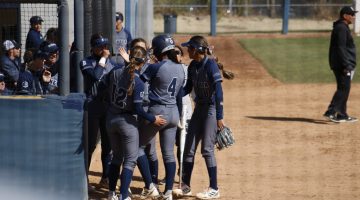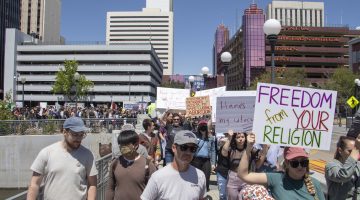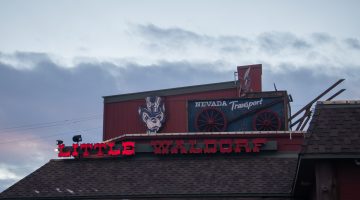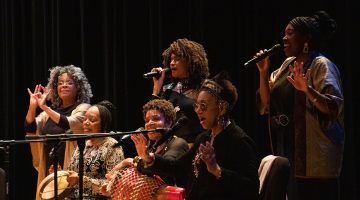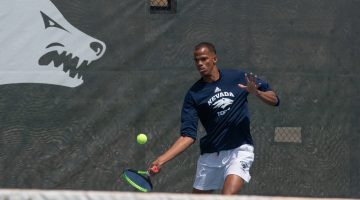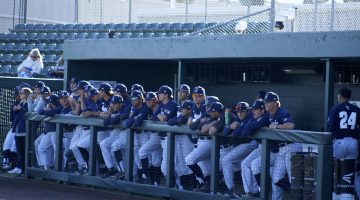
There is more to music majors than just technique and passion. Playing an instrument requires a certain level of engagement and coordination between a musician and their instrument. This was especially emphasized on Tuesday, April 30, as the University of Nevada, Reno’s Percussion Ensemble performed at the Nightingale Concert Hall in the Church of Fine Arts building. The ensemble was directed by Andrew Heglund.
As the house lights dimmed and everyone’s focus turned to the instruments displayed on stage, the audience welcomed the student ensemble. They began their performance with “Teamwork” by Lynn Glassock. The piece showcased the students’ technical skills, yet the notes on the sheet music sounded like a melodious thought that would crescendo as each student played their part. The musicians created a space of musical dialogue and reflection.
To continue the musical conversation in a different tone, the students transitioned into playing “Postludes” by Elliot Cole, using two vibraphones and bows for string instruments. The musicians played each piece as if they were peeling off every note. The extraction of every note appeared to be physically demanding as the musicians would reach over the instrument to peel off the vibraphone’s high-pitched sounds with precision. The melodious shrills lingered like after-thoughts, leaving a sense of awe within the audience.
Student Alen Woo performed “Four Pieces for Timpani” by John Bergamo. During his performance, he demonstrated how one could steady and calm the loud sounds of the timpani while producing roaring echoes from its hollow insides. The timpani’s powerful boom was pounding in the ears and hearts of the audience. Woo also played that Friday in the new arts building during another performance.
Next, Director Heglund and senior student, David Gervais, performed “Solo #1 for Two Drum Sets.” Heglund created the piece which highlighted the familiar drum pattern of paradiddle-diddle, but with an added base. The slithering of the drumsticks from cymbals to drums gave the impression of all the instruments working like a well-oiled machine.
They also played Heglund’s version of “Snow Day.” Heglund jokingly shared that a previous group of his students referred to it more like a blizzard than regular snow. The harmonious raucous that echoed throughout the hall indeed embodied a well-crafted snow storm. The audience embraced the clamor and energetic feel of Heglund’s snow storm.
The ensemble ended the night the way they began, as a team. Their last piece, “Bonham,” highlighted one of rock ‘n roll’s most famous musician’s signature style. John Bonham was British rock band Led Zeppelin’s drummer and was known for his distinctive sound and sense of “groove” for the music. The talented Christopher Rouse modified the piece for percussions. The students played, swayed, and tapped to their sounds. Bonham’s groove was now theirs.
From the first motion of Heglund’s hand raised to begin conducting to the last resonating note, the audience had no other choice but to immersed themselves into the world of percussion. As students bid farewell to another spring semester and welcome a long-deserved vacation, their music performed that night will continue to echo throughout the hall.
Their music was a reminder that the relationship between the musician and the instrument produces a language that needs to be spoken with the audience. The act of listening to music, in this case, was not passive; instead, it was a chance to understand and appreciate the intimate dynamic of the language created by the musician and the instrument.
To stay up to date with the latest performances, visit https://events.unr.edu/arts or follow School of the Arts at UNR on Facebook.


